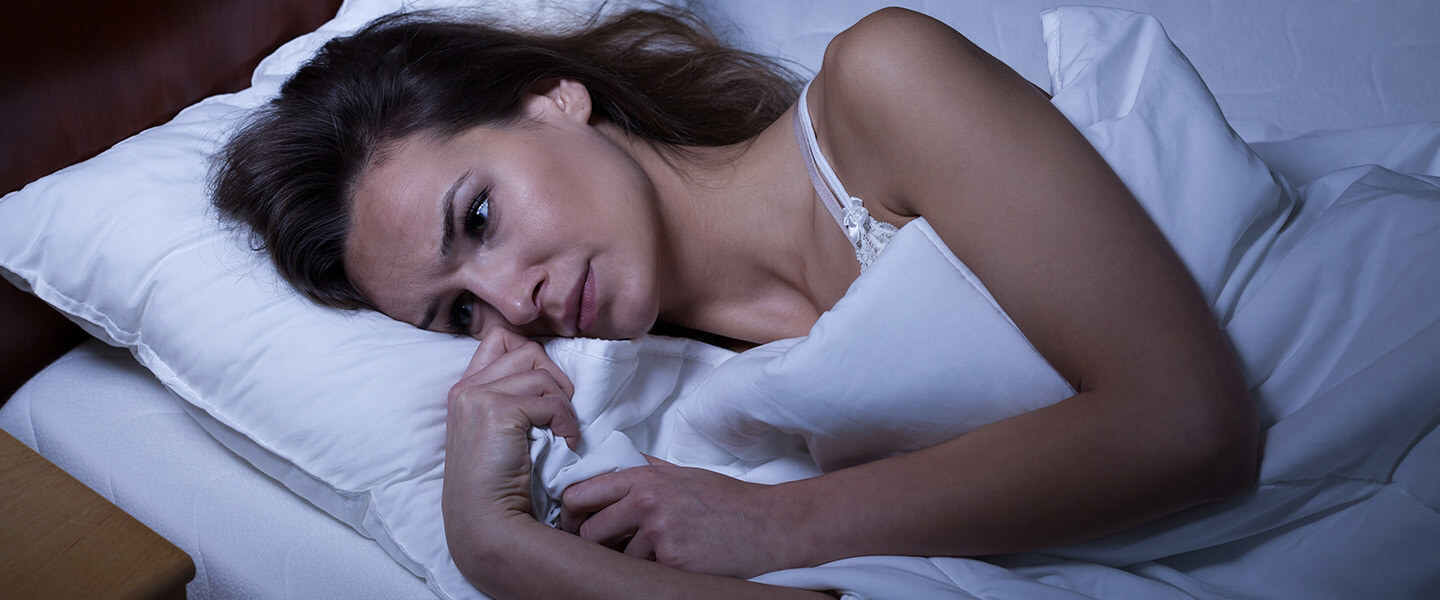Evidence That Cognitive Behavioral Therapy Can Help People With Insomnia Who Also Are Depressed or Anxious
Evidence That Cognitive Behavioral Therapy Can Help People With Insomnia Who Also Are Depressed or Anxious

In a review of available randomized, controlled studies, a research team has found evidence of the importance of treating insomnia symptoms in people who also suffer from either depression, anxiety, or PTSD.
Insomnia is common in the general population: it is estimated that 35% to 50% of adults suffer from insomnia symptoms and 10% to 20% of all adults have insomnia disorder. The latter is defined by a dissatisfaction with sleep quality or quantity due either to difficulty falling or remaining asleep, and resulting in clinically significant distress or impaired functioning.
Insomnia symptoms and psychiatric disorders often occur together. People with insomnia, for example, are estimated to be five times more likely to have anxiety or depression than people who don't have insomnia. Sleep disruptions, notably including nightmares, are also common in those who suffer from PTSD.
The first-line treatment for adult insomnia is a specialized form of cognitive behavioral therapy, called CBT-I. It is recommended by most doctors before drug therapy, and it is the most widely used non-drug treatment for sleep problems.
According to researchers at the University of California, San Francisco, led by 2019 BBRF Young Investigator Lauren D. Asarnow, Ph.D., "a large body of research" has already demonstrated the effectiveness of CBT-I in treating chronic insomnia in adults without psychiatric co-morbidities. But in view of the high rates of comorbidity, the team set out to examine the evidence for CBT-I's effectiveness in treating those with insomnia symptoms and either major depressive disorder (MDD), generalized anxiety disorder (GAD), or PTSD. Riya Mirchandaney was first author of the team's paper reporting results, which appeared in Current Psychiatry Reports.
CBT-I, the team notes, draws directly from basic science on sleep and circadian rhythms, combining multiple treatment elements including sleep education; controlling environmental and biological stimuli that affect sleep; restricting sleep to certain times of the 24-hour cycle; and cognitive psychotherapy.
Sleep problems are closely associated with major depression, affecting up to 90% of those with the diagnosis. The team notes that among those with and without MDD, sleep disturbance, especially problems falling asleep, are "one of the more important predictors of a future depressive episode." At the same time, depression symptoms have been found to raise the risk of future insomnia. The comorbidity is associated with poorer outcomes for both conditions, the team notes. Also, insomnia may be an independent risk factor for suicide, suicidal thoughts and behaviors, as well as non-suicidal self-injury, among both adults and young people.
The team assessed the best available prior clinical trials addressing MDD and insomnia comorbidity. The criterion applied to past studies was their statistical power, a reflection of study size and design. The team noted that based on these studies, augmenting depression treatment with CBT-I does not appear to significantly improve depression outcomes compared with a control or placebo augmentation.
However, they say, comorbid participants of such trials who did experience an improvement in insomnia symptoms were more likely to have better depression outcomes. They propose that improvement in insomnia symptoms "is likely a critical component of depression symptom reduction." The team also noted interest in the possibility that CBT-I might be tested as a preventive measure for individuals with sub-clinical depression.
With respect to comorbid depression and insomnia, the team concluded that CBT-I was "promising," and that when compared with standard CBT for depression or treatment with antidepressant medications, CBT-I "may be comparably effective for depressive symptoms and superior for insomnia symptoms." But when paired with antidepressant medications, CBT-I "may not have a significant additive effect" on outcomes. More research is called for, they said.
With regard to anxiety, evidence does suggest that anxiety disorders are a risk factor for later insomnia, but not necessarily the other way around. "A potential mechanism underlying the anxiety-insomnia association is the role of worry—namely, inappropriate worry about sleep" which may lead to arousal, which tends to perpetuate insomnia, the team noted. Given the linkage, it makes sense, they say, to treat insomnia in patients with GAD—but no adequately powered trial has yet tested CBT-I in comorbid patients.
As for PTSD and insomnia: the team noted that multiple studies have shown that disturbed sleep "often precedes and predicts subsequent PTSD," and that current PTSD treatments "may not effectively target sleep-related symptoms." Yet there have only been a handful of clinical trials of CBT-I for patients with comorbid PTSD and insomnia. These studies, which "show some promise" in the team's view, have mostly involved adult military veterans and so their results are hard to apply to other populations.
The team also looked for evidence of potential "moderators" of CBT-I outcomes in cases of comorbid depression or anxiety—factors which may alter the effectiveness of CBT-I in such patients. There were hints in past data that "evening preference" (circadian rhythm in an individual that favors activity in the evening vs. earlier in the day) may be one such factor. Another possible moderating factor is the severity of depression or anxiety symptoms before treatments begin. As with other observations in the paper, the team said additional research is needed to further assess potential moderating factors.


